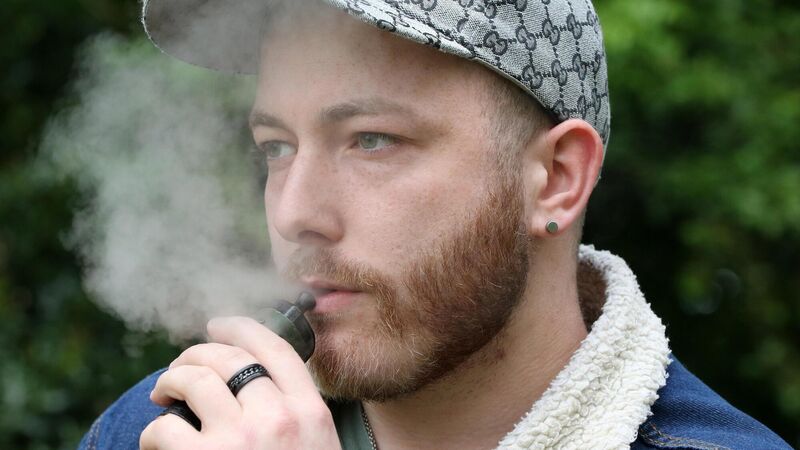'I bought them for the flavours, now I'm buying for the nicotine': The addictive allure of vaping

Patrick Portley from Newcastle West: 'I have tried quitting and to be completely honest if you can avoid vaping at all costs you should... Go cold turkey on the fags or get the patches.' Picture: Brendan Gleeson
According to a recent HSE study, the risks and negative health effects linked to vaping include nicotine dependence, injuries resulting from defective e-cigarette batteries, poisoning and exposure to toxins, and changes in how one’s heart, lungs, and organs usually work.
- E-cigarette emissions typically contain nicotine and other toxic substances that are harmful to users, and non-users exposed to them;
- They increase the risk of lung disorders and heart disease;
- Exposure of children and adolescents to nicotine can have long-lasting, damaging effects on brain development;
- Nicotine is highly addictive;
- There is a growing body of evidence that children who have never smoked but who use them are at least twice as likely to take up smoking later in life.
The problem isn’t just one for individual users’ health, but also for the environment. Vaping, particularly the disposable vapes, designed to last on average 200-400 puffs, likened to 20 cigarettes, have contributed to a wider litter problem on the streets.
Cork mother of three Caroline Daly, whose teenage son regularly vapes, believes they are a “cynical way for the smoking industry to ‘recruit’ new customers”.

One young vaper, a 22-year-old college student whose vaping habit on nights out escalated into a full-blown addiction, blames stress caused by her final year in college.













